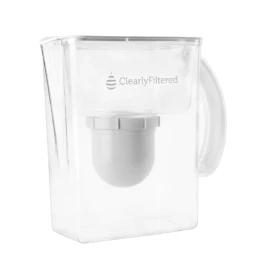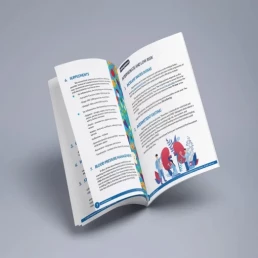When it comes to chronic kidney disease (CKD), few topics spark as much debate as protein. Should patients restrict it? Is “more” always harmful? And what about newer approaches, such as ketogenic diets? Could they actually be better for the kidneys than reducing protein intake? This blog is going to tackle the controversy between protein restriction vs. ketosis for CKD.
The answers aren’t simple, but that’s what makes this conversation so important.

By Majd Isreb, MD, FACP, FASN, IFMC
Why Protein Became a Target in CKD Care
For decades, clinicians have observed that protein loads increase kidney workload, thereby raising filtration pressure within the glomeruli. This “hyperfiltration” response makes sense; our kidneys adapt to clear nitrogenous waste when protein is abundant. Over time, though, sustained hyperfiltration has been linked to faster CKD progression.
On that basis, guidelines like KDOQI 2020 recommend 0.55–0.60 g/kg/day of protein for many patients with CKD stages 3–5, and sometimes even lower if ketoacid analogues are used. KDIGO 2024 emphasizes the value of restriction but stresses that protein targets should be personalized, rather than universally prescribed.
The Case for Protein Restriction
Clinical trials and meta-analyses tell us that carefully designed low or very-low protein diets can delay the need for dialysis and slow eGFR decline, especially in advanced CKD. Some studies even show a “dose response”: the stricter the restriction (when safely supported with ketoacids), the greater the benefit.
But here’s the catch: protein restriction also carries risk. Too little protein can worsen malnutrition, sarcopenia, and quality of life, especially in older adults or those already frail. This is why guidelines no longer frame restriction as a one-size-fits-all “rule,” but as a therapeutic tool that must be applied thoughtfully. In fact, recently, some researchers have advocated for moving beyond protein restrictions for CKD.
Why Some Studies Might Overstate Protein’s Harm
Not all evidence pointing to protein as a villain is as strong as it seems.
-
Creatinine confounding: Many studies rely on creatinine-based eGFR, but creatinine levels rise with higher protein intake due to muscle metabolism, not always indicating that kidney function is truly worsening. When cystatin C is used instead, the apparent harm often softens.
-
Short-term vs. long-term hyperfiltration: Protein spikes cause filtration to rise in the moment, but it’s less clear if that always translates into long-term damage.
-
Dietary misclassification: Food frequency questionnaires, the backbone of many cohort studies, are notoriously imprecise. People often misreport their food intake, and subtle shifts in diet quality (such as plant vs. animal protein, acid load, and phosphorus) may matter as much as the total protein grams.
-
Reverse causality: Sicker patients often eat less protein. In some datasets, higher protein intake appears harmful simply because healthier patients tend to eat more.
In other words, the data linking “high protein” to poor renal outcomes is messy and sometimes misleading.
Plant Protein, Acid Load, and the Quality Factor
Not all protein is created equal. Plant-predominant diets consistently show better kidney outcomes than meat-heavy ones. Why? Plant proteins produce less acid, deliver less bioavailable phosphorus, and come packaged with fiber and phytonutrients.
This means that the quality of protein may matter more than the quantity, especially for patients balancing kidney preservation with nutrition and muscle health.
Could Uric Acid be the Missing Link?
High uric acid may be one of the missing links between high protein intake and faster CKD progression. Animal proteins rich in purines, such as red meat and certain types of seafood, can increase serum uric acid levels, which in turn have been linked to endothelial dysfunction, inflammation, and kidney fibrosis.
While observational studies consistently show that hyperuricemia correlates with worse renal outcomes, interventional trials lowering uric acid have yielded mixed results, suggesting it may act both as a driver and a marker of kidney decline. Importantly, plant proteins tend to generate far less uric acid, aligning with research showing more favorable outcomes for CKD patients on plant-forward diets.
Where Ketosis Fits into the Picture
The conversation gets even more interesting when we add ketogenic diets.
SGLT2 inhibitors, now standard of care in CKD, induce mild ketosis, which appears renoprotective. Ketones serve as efficient fuels for the kidneys and the heart, improve insulin sensitivity, and may reduce inflammation.
Could a ketogenic diet mimic or amplify these benefits? Emerging studies suggest it’s possible. In obesity-related CKD and conditions like ADPKD, ketogenic eating patterns have shown promise for weight reduction, metabolic improvement, and even slowed cyst growth.
Still, the evidence base is small but growing. Risks like metabolic acidosis, kidney stones, and micronutrient deficiencies require careful monitoring, especially in advanced CKD. For now, ketosis should be seen as a tool for select patients, not a universal substitute for protein restriction.
Does the Ketogenic Diet Need to Be High in Protein?
A common misconception is that ketogenic diets are high in protein, but in reality, they are designed to be high in fat, very low in carbohydrates, and only moderate in protein. Excess protein can interfere with ketosis because the body converts amino acids into glucose, reducing ketone production.
Most well-formulated ketogenic diets provide adequate but not excessive protein, typically around 0.8–1.2 g/kg/day, which distinguishes them from high-protein, low-carb diets like the Atkins diet. This distinction is crucial in CKD, where protein moderation may remain a key consideration.
How to Personalize Protein in CKD vs. Ketosis for CKD
Instead of rigid rules, here’s how to think about protein in practice:
-
Advanced CKD with rapid decline: A low or very low protein diet (sometimes with ketoacids) can “buy time” before dialysis.
-
Older or frail adults: Too much restriction risks muscle wasting. Protein restrictions in this scenario are not recommended.
-
Diabetes or obesity: A plant-forward protein and mild carbohydrate-restricted diet may improve metabolic health without overburdening the kidneys.
-
Measurement matters: Use cystatin C or combined eGFR equations when possible, and track albuminuria, muscle mass, and nutrition labs, in addition to creatinine.
Personalization means adjusting protein not only to the stage of CKD, but also to the whole person: their body composition, goals, diet quality, and ability to sustain the plan.
Is Ketosis “Better” than Protein Restriction?
Not yet. The data on protein restriction, although not perfect, is more comprehensive and established. Ketosis shows exciting potential, especially as a complement to other therapies, but we need long-term outcome trials before declaring it superior.
What we can say is this: there’s no universal answer. For some patients, lower protein is key. For others, supporting muscle and metabolism takes precedence. For a few, a carefully monitored ketogenic plan could add unique benefits. This should be done under the supervision of a dietitian or certified nutritionist experienced in the ketogenic diet.
The Bottom Line on Protein Restriction
The debate over protein in CKD reflects a bigger truth in medicine: context matters. No two patients are alike, and no single diet strategy should be imposed without nuance. Protein restriction is powerful, but not universally safe. Ketosis is promising, but not yet proven. The art lies in tailoring nutrition to the patient, not the patient to the diet.








